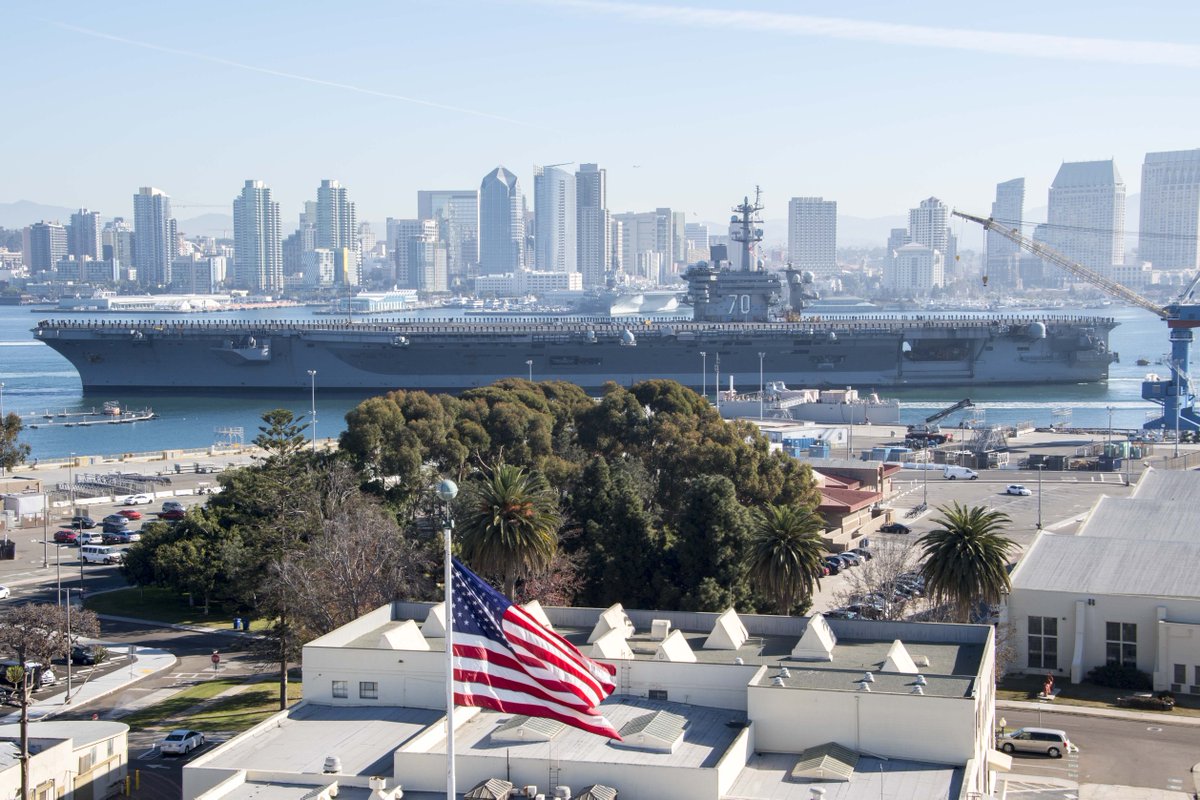France is sending 350 sailors and naval aviators to deploy with a U.S. Navy aircraft carrier this spring as their nuclear-powered carrier finishes scheduled maintenance, French officials told USNI News.
The April to May deployment will occur just before France’s aircraft carrier FS
Charles de Gaulle (R91) is expected to complete a major maintenance period which started in 2015. The aircrews will do carrier qualifications aboard USS
George H.W. Bush (CVN-77), but the intent is to accomplish more than qualifications or cross-deck operations, Capt. Jean-Emmanuel Roux de Luze, French Naval Attaché to the U.S. told USNI News.
“We want to demonstrate our ability to integrate with U.S. military services,” Roux de Luze said. “We want to show we do maintenance, demonstrate we can load weapons.”
French Navy Dassault Rafale M fighters and Northop Grumman E-2C Hawkeye aircraft will at first fly with U.S. airwings out of Naval Air Station Oceana, in Virginia Beach. French sailors will work with their U.S. counterparts maintaining the aircraft, Rouz de Luze said. The unspecified French forces will then board
Bush and operate as part of the air wing.
The agreement to send French aircraft, crews, and sailors to the U.S. was first announced in December, when U.S. Navy Chief of Naval Operations Adm. John Richardson met in Paris with his French counterpart French Navy Chief of Staff Adm. Christophe Prazuck, first reported by website
.
While speaking at the Surface Navy Association’s International Navies Luncheon Wednesday, Rouz de Luze, said joint operations build trust among navies by demonstrating each can work with the other. With the U.S. Navy, he said the technology used, procedures, communications equipment are all basically the same.
“Today we are 95 percent interoperable,” Rouz de Luze said. “Our concerns in our navy is in 10 years, in 15 years will we be able to work like that.”
The U.S. Navy, though, in its push to ensure it is always technologically ahead of any near-peers, is the leader in developing new systems. Rouz de Luze said militarily, the U.S. Navy can go alone.
“Due to its size and power, the US Navy does not really need us and not really need help of other navies,” Rouz de Luze said.
But politically, Rouz de Luze said the U.S. needs to be part of a coalition or NATO operation because doing so give legitimacy to an action. For everyone else, Rouz de Luze said coalitions are necessary for both political and military.
“The French Navy, we know in the future we will work with other navies, so you need to know how to operate with other navies,” Rouz de Luze said.
The French have been an active contributor to the anti-ISIS coalition air strikes via the French military’s Opération Chammal since 2014.
In 2015, the French deployed
de Gaulle shortly following the deadly ISIS attacks on the offices of the satirical magazine
Charlie Hebdo in Paris. The carrier deployed on two other occassions to the Middle East in support of the anti-ISIS mission.





